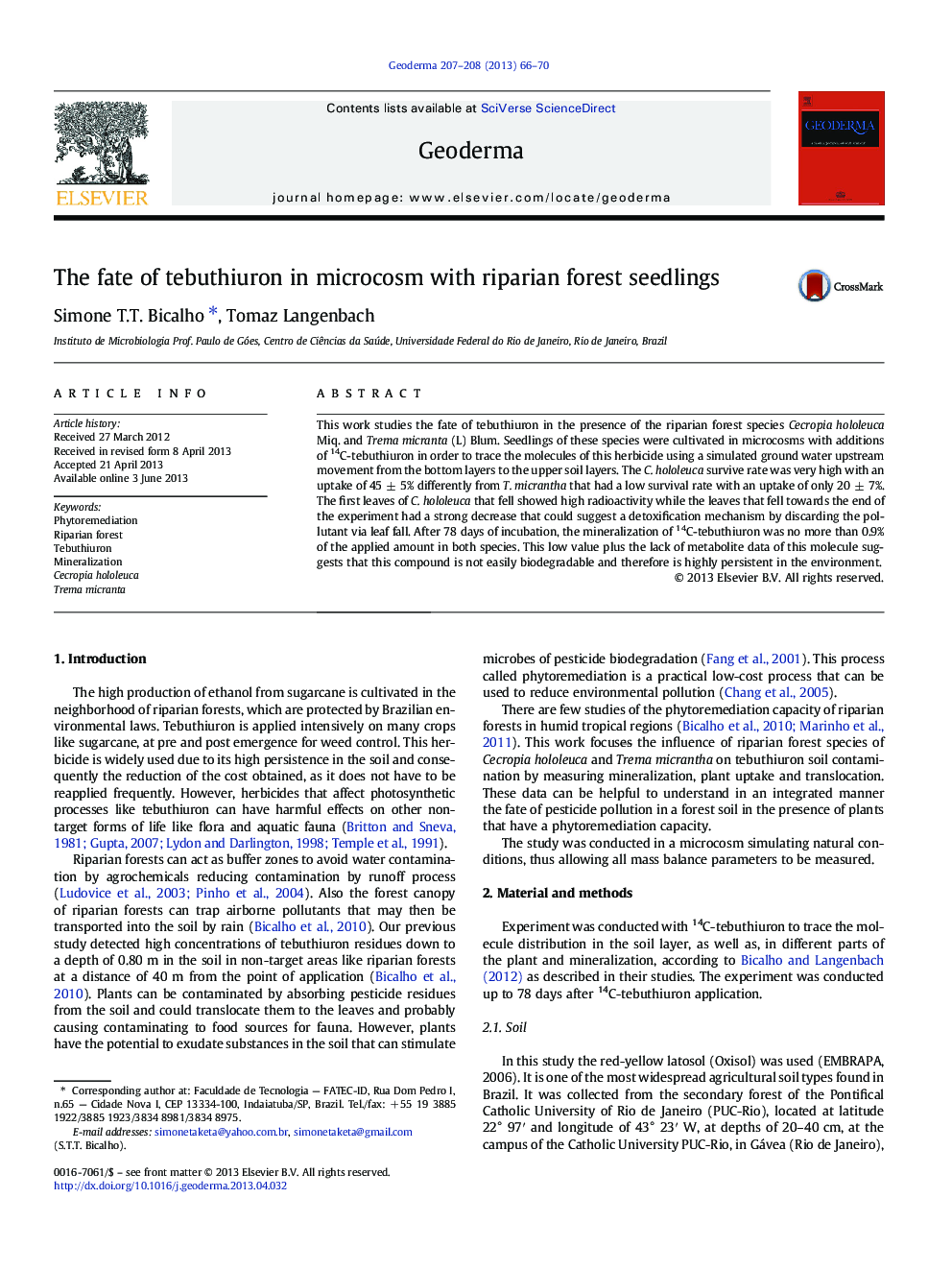| Article ID | Journal | Published Year | Pages | File Type |
|---|---|---|---|---|
| 6409150 | Geoderma | 2013 | 5 Pages |
â¢Seedlings were cultivated in microcosm using a simulated ground water contaminated.â¢Riparian plants have the capacity to phytostabilize by uptake and bioaccumulation.â¢C. hololeuca has the capacity to detoxify 14C-tebuthiuron by leaf drop.â¢The low mineralization by plants suggests that tebuthiuron is no biodegradated and therefore highly persistent.
This work studies the fate of tebuthiuron in the presence of the riparian forest species Cecropia hololeuca Miq. and Trema micranta (L) Blum. Seedlings of these species were cultivated in microcosms with additions of 14C-tebuthiuron in order to trace the molecules of this herbicide using a simulated ground water upstream movement from the bottom layers to the upper soil layers. The C. hololeuca survive rate was very high with an uptake of 45 ± 5% differently from T. micrantha that had a low survival rate with an uptake of only 20 ± 7%. The first leaves of C. hololeuca that fell showed high radioactivity while the leaves that fell towards the end of the experiment had a strong decrease that could suggest a detoxification mechanism by discarding the pollutant via leaf fall. After 78 days of incubation, the mineralization of 14C-tebuthiuron was no more than 0.9% of the applied amount in both species. This low value plus the lack of metabolite data of this molecule suggests that this compound is not easily biodegradable and therefore is highly persistent in the environment.
